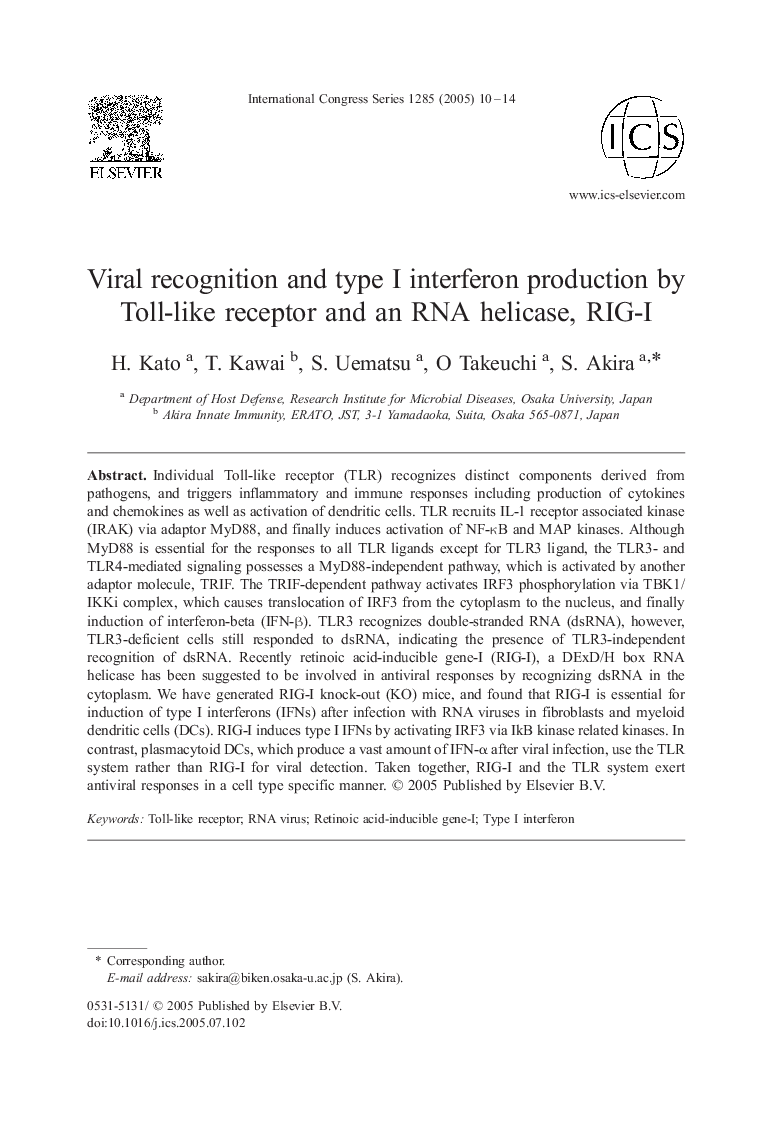| Article ID | Journal | Published Year | Pages | File Type |
|---|---|---|---|---|
| 9021223 | International Congress Series | 2005 | 5 Pages |
Abstract
Individual Toll-like receptor (TLR) recognizes distinct components derived from pathogens, and triggers inflammatory and immune responses including production of cytokines and chemokines as well as activation of dendritic cells. TLR recruits IL-1 receptor associated kinase (IRAK) via adaptor MyD88, and finally induces activation of NF-κB and MAP kinases. Although MyD88 is essential for the responses to all TLR ligands except for TLR3 ligand, the TLR3- and TLR4-mediated signaling possesses a MyD88-independent pathway, which is activated by another adaptor molecule, TRIF. The TRIF-dependent pathway activates IRF3 phosphorylation via TBK1/IKKi complex, which causes translocation of IRF3 from the cytoplasm to the nucleus, and finally induction of interferon-beta (IFN-β). TLR3 recognizes double-stranded RNA (dsRNA), however, TLR3-deficient cells still responded to dsRNA, indicating the presence of TLR3-independent recognition of dsRNA. Recently retinoic acid-inducible gene-I (RIG-I), a DExD/H box RNA helicase has been suggested to be involved in antiviral responses by recognizing dsRNA in the cytoplasm. We have generated RIG-I knock-out (KO) mice, and found that RIG-I is essential for induction of type I interferons (IFNs) after infection with RNA viruses in fibroblasts and myeloid dendritic cells (DCs). RIG-I induces type I IFNs by activating IRF3 via IkB kinase related kinases. In contrast, plasmacytoid DCs, which produce a vast amount of IFN-α after viral infection, use the TLR system rather than RIG-I for viral detection. Taken together, RIG-I and the TLR system exert antiviral responses in a cell type specific manner.
Related Topics
Life Sciences
Biochemistry, Genetics and Molecular Biology
Molecular Biology
Authors
H. Kato, T. Kawai, S. Uematsu, O Takeuchi, S. Akira,
